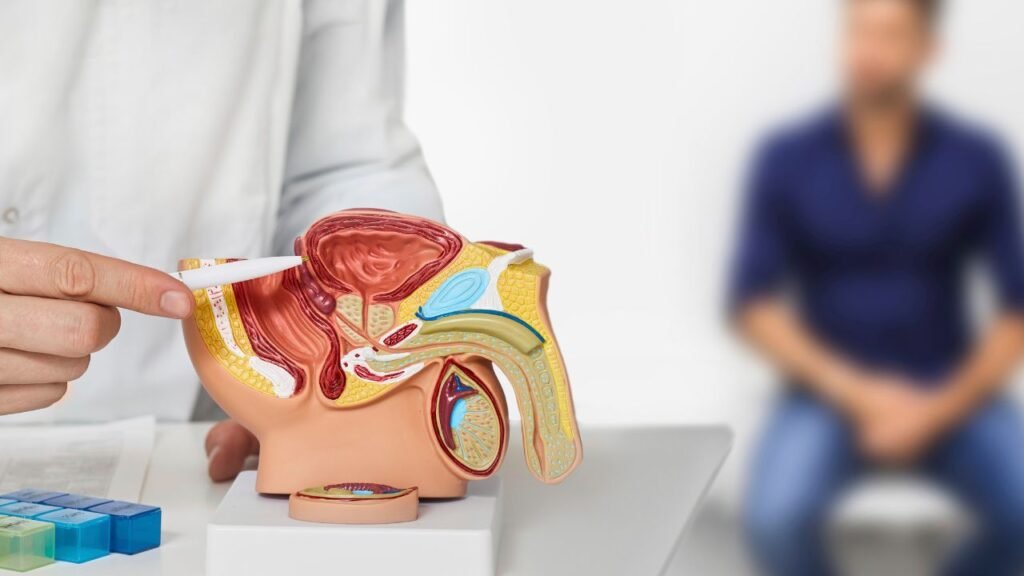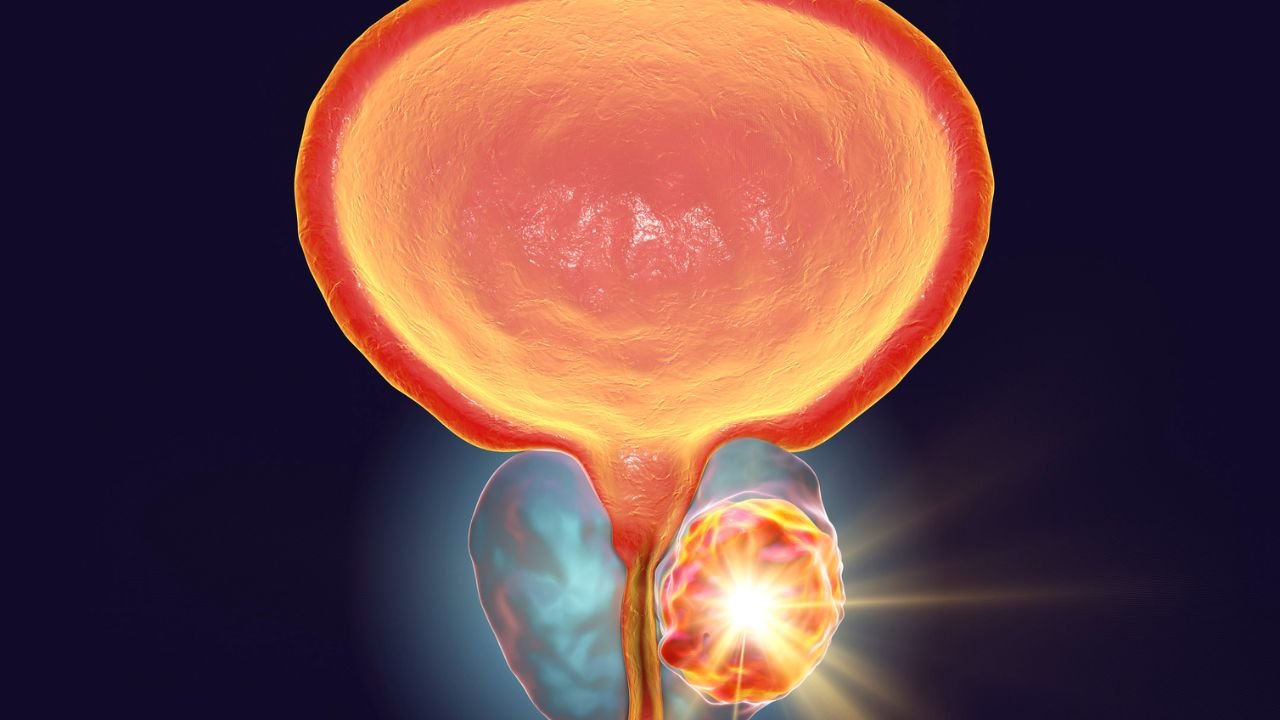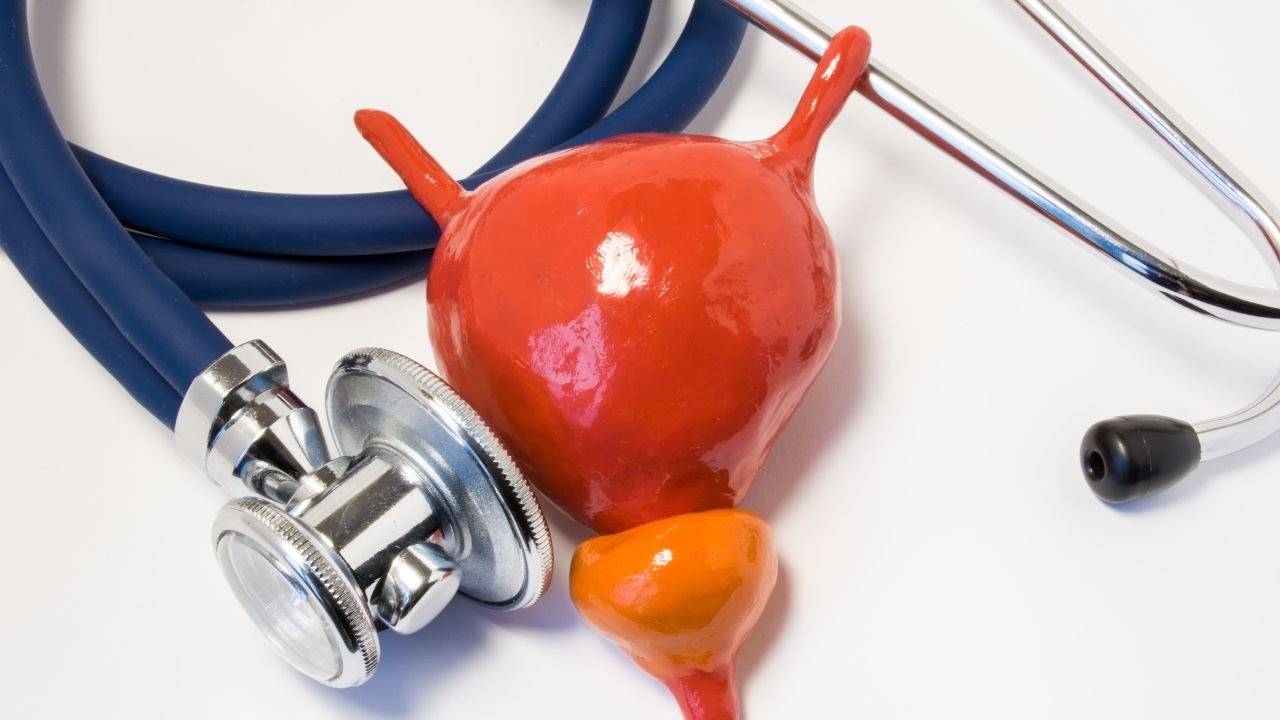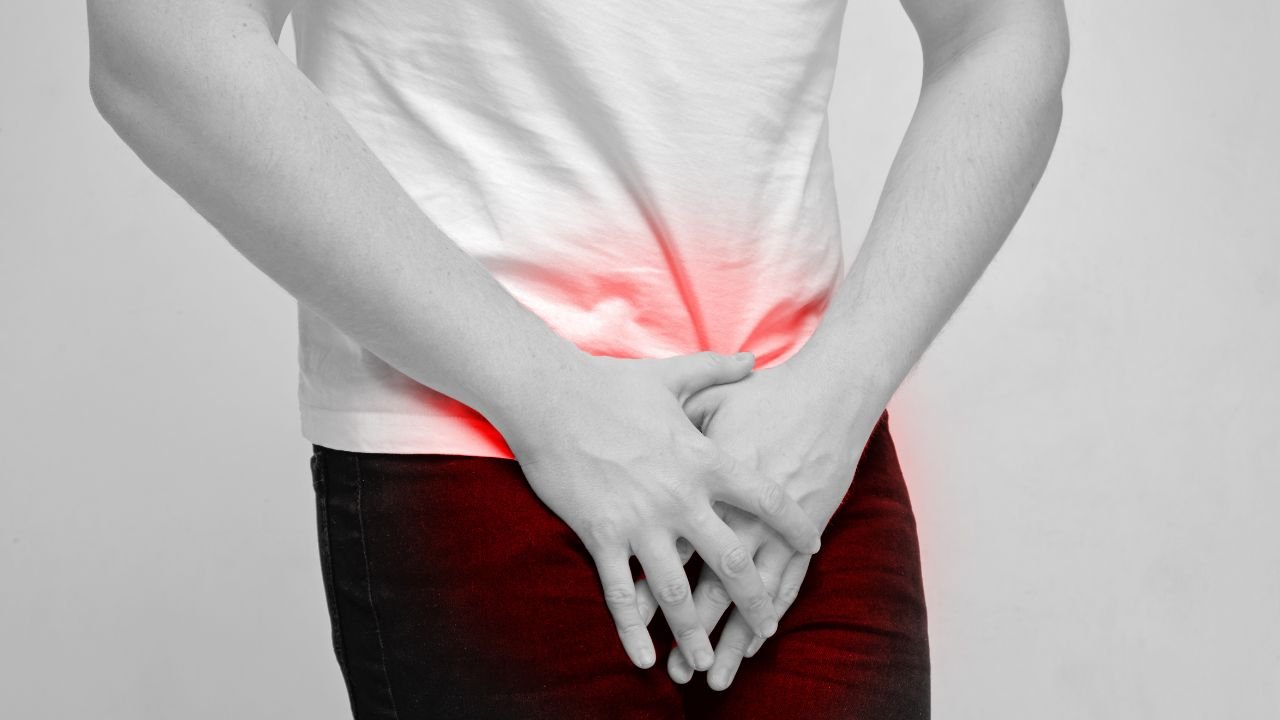Guide to Enlarged Prostate Symptoms and Treatment Options for Seniors

Last Updated on June 27, 2025 by Julian Espinosa
Are you experiencing more frequent bathroom trips, especially during the night? You’re not alone. Nearly half of men over 45 deal with an enlarged prostate, and this number increases significantly as we approach and enjoy our retirement years. The good news? This common condition, known as benign prostatic hyperplasia (BPH), is highly manageable with the right approach.
This comprehensive guide walks you through everything you need to know about BPH, from understanding the early symptoms to exploring modern treatment options that can restore your comfort and confidence. You’ll discover practical lifestyle adjustments that can make a real difference, learn about the latest medications that provide relief without major side effects, and explore innovative minimally invasive procedures that many men find life-changing.
We’ll also address a concern many men have but hesitate to discuss: how BPH affects sexual health and what you can do about it. Plus, you’ll find valuable information about involving your family in your care journey and maintaining your emotional well-being throughout treatment.
Whether you’re just noticing some changes or have been dealing with symptoms for a while, this guide offers hope and practical solutions. With today’s treatment options, there’s no reason to let an enlarged prostate limit your enjoyment of retirement. Let’s explore how you can take control of your health and continue living life to the fullest.
Understanding Enlarged Prostate (BPH)
What Is BPH?
An enlarged prostate, medically called benign prostatic hyperplasia (BPH), occurs when your prostate gland grows larger than normal. Think of your prostate as a walnut-sized gland that sits just below your bladder, wrapping around the tube that carries urine out of your body (the urethra). As men age, this gland often goes through a second growth phase, which can squeeze the urethra like a garden hose being pinched.
The important word here is “benign”—this condition is not cancerous and doesn’t increase your risk of prostate cancer. It’s simply your body’s natural response to aging, much like how your hair might thin or your joints might feel a bit stiffer than they used to.
How Common Is BPH?
If you’re dealing with prostate enlargement, you’re in good company. Recent studies show that about 50% of men in their 50s experience some degree of prostate enlargement, and this number jumps to over 80% for men in their 80s. The key thing to remember is that having an enlarged prostate doesn’t automatically mean you’ll have bothersome symptoms—many men live comfortably with mild enlargement.

Recognizing the Signs: When Your Body Is Telling You Something
BPH symptoms typically develop gradually, which means you might not notice them right away. Here’s what to watch for:
- Nighttime Disruptions: Are you getting up multiple times during the night to use the bathroom? This is often the first sign men notice, and it’s called nocturia.
- Urgency and Frequency: You might feel like you need to urinate more often during the day, or experience a sudden, strong urge that’s hard to delay.
- Flow Changes: Your urine stream might become weaker, take longer to start, or stop and start during urination. Some men describe feeling like they’re “waiting for the faucet to turn on.”
- Incomplete Emptying: That feeling like your bladder isn’t completely empty after urinating is another common sign.
- Dribbling: A few drops after you think you’re finished is normal, but persistent dribbling might indicate BPH.
Taking Action Early: Lifestyle Strategies That Work
Smart Fluid Management
You don’t need to avoid drinking fluids, but timing matters. Try to drink most of your fluids earlier in the day and reduce intake 2-3 hours before bedtime. This simple change can significantly improve your sleep quality.
Avoiding Bladder Irritants
Certain foods and drinks can make symptoms worse. Consider reducing caffeine (coffee, tea, soda), alcohol, spicy foods, and acidic beverages like citrus juices. You don’t have to eliminate them entirely—just notice if they make your symptoms worse.
Double Voiding Technique
After urinating, wait a moment, then try to urinate again. This simple technique can help ensure your bladder empties more completely.
Pelvic Floor Exercises
Just like women, men benefit from strengthening their pelvic floor muscles. These Kegel exercises involve tightening the muscles you’d use to stop urination midstream. Hold for 5 seconds, relax for 5 seconds, and repeat 10-15 times, three times daily.
Stay Active
Regular physical activity helps reduce inflammation and supports overall prostate health. Even a daily 30-minute walk can make a difference.
Medical Treatments: Modern Solutions for Better Living
Medications That Make a Difference
When lifestyle changes aren’t enough, medications can provide significant relief:
Alpha-1 Blockers work quickly by relaxing the muscles around your prostate and bladder neck. You might notice improvement within days or weeks. Common options include tamsulosin (Flomax) and alfuzosin (Uroxatral). The main side effects are usually mild dizziness and changes in ejaculation.
5-Alpha Reductase Inhibitors like finasteride (Proscar) and dutasteride (Avodart) actually shrink the prostate over time. They take several months to show full effects but can be very effective for significantly enlarged prostates.
Combination Therapy uses both types of medications together, offering the quick relief of alpha blockers with the long-term shrinking effects of 5-alpha reductase inhibitors.
Tadalafil (Cialis) serves double duty by helping both BPH symptoms and erectile dysfunction, making it a popular choice for men dealing with both conditions.
Advanced Treatment Options: When Medication Isn’t Enough
Minimally Invasive Procedures
Modern medicine offers several innovative treatments that can provide dramatic relief with minimal downtime:
UroLift involves placing tiny implants that hold the enlarged prostate tissue away from the urethra, like opening curtains. This procedure preserves sexual function and can be done as an outpatient procedure.
Rezum Water Vapor Therapy uses controlled steam to shrink excess prostate tissue gradually. Most men see improvement within 2-6 weeks, and the effects can last for years.
Laser Therapies use different types of laser energy to remove or vaporize excess prostate tissue. These procedures often allow for same-day discharge and faster recovery than traditional surgery.
Prostate Artery Embolization is a newer technique where tiny particles are used to block blood flow to the prostate, causing it to shrink. This procedure is performed by an interventional radiologist.
Surgical Options
For severe cases or very large prostates, surgery remains highly effective:
TURP (Transurethral Resection of the Prostate) is often called the “gold standard” because it provides excellent, long-lasting results. The recovery typically takes a few weeks, and most men experience dramatic symptom improvement.

Addressing Sexual Health Concerns
Let’s talk openly about something many men worry about but hesitate to discuss: how BPH affects your sex life.
The Real Impact
BPH itself doesn’t directly cause erectile dysfunction, but the two conditions often occur together as men age. Some BPH treatments can affect sexual function, but many modern options are designed to minimize these effects.
Treatment Considerations
If you’re sexually active, discuss this with your doctor when choosing treatments. For example, UroLift and some laser procedures are specifically designed to preserve sexual function. Your doctor can help you weigh the benefits of symptom relief against any potential sexual side effects.
Communication Is Key
Talk openly with your partner about any changes you’re experiencing. Many couples find that understanding the condition and working together to find solutions actually strengthens their relationship.
Supporting Overall Well-Being with BPH
It’s Normal to Feel Frustrated
Dealing with frequent bathroom trips, interrupted sleep, and concerns about accidents can be emotionally draining. Feeling frustrated, embarrassed, or even anxious is completely normal and understandable.
Practical Coping Strategies
- Plan your outings around bathroom locations
- Use apps to find nearby restrooms when traveling
- Consider protective undergarments for peace of mind during long trips or important events
- Join online support groups where you can connect with other men facing similar challenges
When to Seek Professional Help
If anxiety or depression about your symptoms becomes overwhelming, don’t hesitate to speak with a counselor or therapist. Many men find that even a few sessions help them develop better coping strategies.

Educate Your Loved Ones
Help your family understand that BPH is a medical condition, not a sign of weakness or decline. When they understand what you’re experiencing, they can be more supportive and accommodating.
Practical Ways Family Can Help
- Remember to make rest stops during car trips
- Keep nightlights in hallways for safer nighttime bathroom visits
- Help you remember to take medications
- Accompany you to doctor appointments for support and to help remember important information
- Be patient if you need to excuse yourself frequently
Open Communication
Share your concerns and feelings with trusted family members. They want to help but may not know how unless you tell them what you need.
Staying on Top of Your Health
Regular Check-ups Are Essential
Even if your symptoms are stable, regular visits with your urologist help catch any changes early and ensure your treatment plan remains optimal. These visits typically include:
- Discussion of symptom changes
- Physical examination
- Review of medications and their effectiveness
- Consideration of new treatment options
Monitoring for Complications
While uncommon, BPH can sometimes lead to complications like urinary tract infections, bladder stones, or kidney problems. Regular monitoring helps prevent these issues.
Managing Urinary Incontinence
If you’re experiencing leakage or accidents, know that effective treatments are available:
Strengthening Exercises
Pelvic floor exercises (Kegels) can significantly improve bladder control. Consider working with a physical therapist who specializes in pelvic floor therapy.
Bladder Training
Gradually extending the time between bathroom visits can help retrain your bladder to hold more urine comfortably.
Practical Solutions
Modern absorbent products are discreet and highly effective. Many men find that using them provides confidence to stay socially active while they’re working on other treatments.
Conclusion
Managing an enlarged prostate doesn’t have to define your retirement years. With today’s treatment options—from simple lifestyle changes to advanced procedures—most men find significant relief and return to enjoying their favorite activities. The key is working with your healthcare team to find the approach that’s right for your specific situation and lifestyle. Have you noticed any of these symptoms, or are you currently managing BPH? What strategies have worked best for you? Share your experiences in the comments below—your insights might help another reader on their journey to better prostate health.
We have more ways to keep you fit and sound during your retirement years. Check out our guide on preserving your physical and mental health!
FAQ: Enlarged Prostate During Retirement
- Is an enlarged prostate the same as prostate cancer?
- No, benign prostatic hyperplasia (BPH) is completely different from prostate cancer. BPH is non-cancerous growth of the prostate that doesn’t increase your cancer risk. However, it’s still important to have regular check-ups since both conditions can occur in the same age group.
- Will I definitely need surgery if I have BPH?
- Not at all. Many men manage BPH successfully with lifestyle changes and medications. Surgery is typically only recommended for severe cases or when other treatments haven’t provided adequate relief.
- How quickly do BPH medications work?
- Alpha-blockers can provide relief within days to weeks, while 5-alpha reductase inhibitors take 3-6 months to show full effects. Your doctor will help you understand what to expect with your specific treatment.
- Can I still have an active sex life with BPH?
- Absolutely. While some treatments may affect sexual function, many modern options are designed to preserve it. Discuss your concerns openly with your doctor to find the best approach for you.
- Will my symptoms get worse over time?
- Not necessarily. While BPH is progressive for some men, many find their symptoms stabilize, especially with proper treatment. Regular monitoring helps ensure your treatment plan stays effective.
- Are there natural remedies that actually work for BPH?
- Some men find benefits from saw palmetto, beta-sitosterol, and pumpkin seed extract, though scientific evidence is mixed. Always discuss supplements with your doctor, as they can interact with other medications.
- How do I know if I need to see a urologist?
- If urinary symptoms interfere with your sleep, daily activities, or quality of life, it’s time to see a specialist. Your primary care doctor can provide a referral and initial evaluation.
- Can stress make BPH symptoms worse?
- Yes, stress can worsen urinary symptoms. The muscles around your bladder and prostate can tighten when you’re stressed, making symptoms more noticeable. Stress management techniques often help.
REFERENCES
- American Urological Association. (2021). Benign Prostatic Hyperplasia: AUA Guideline Amendment 2019. Journal of Urology, 206(5), 1054–1066. https://www.auanet.org/guidelines-and-quality/guidelines/benign-prostatic-hyperplasia-%28bph%29-guideline American Urological Association
- National Institute of Diabetes and Digestive and Kidney Diseases. (2024). Prostate Enlargement (Benign Prostatic Hyperplasia). https://www.niddk.nih.gov/health-information/urologic-diseases/prostate-problems/enlarged-prostate-benign-prostatic-hyperplasia NIDDK
- Mayo Clinic Staff. (2023). Benign prostatic hyperplasia (BPH) – Symptoms and causes. https://www.mayoclinic.org/diseases-conditions/benign-prostatic-hyperplasia/symptoms-causes/syc-20370087 Mayo Clinic
- Urology Care Foundation. (2024). Benign Prostatic Hyperplasia (BPH). https://www.urologyhealth.org/urology-a-z/b/benign-prostatic-hyperplasia-%28bph%29 Urology Health
- Harvard Health Publishing. (2023). Enlarged prostate: A complex problem. https://www.health.harvard.edu/mens-health/the-growing-problem-of-an-enlarged-prostate-gland Harvard Health
- Cleveland Clinic. (2024). Benign Prostatic Hyperplasia (BPH): Management and Treatment. https://my.clevelandclinic.org/health/diseases/15996-benign-prostatic-hyperplasia-bph my.clevelandclinic.org





